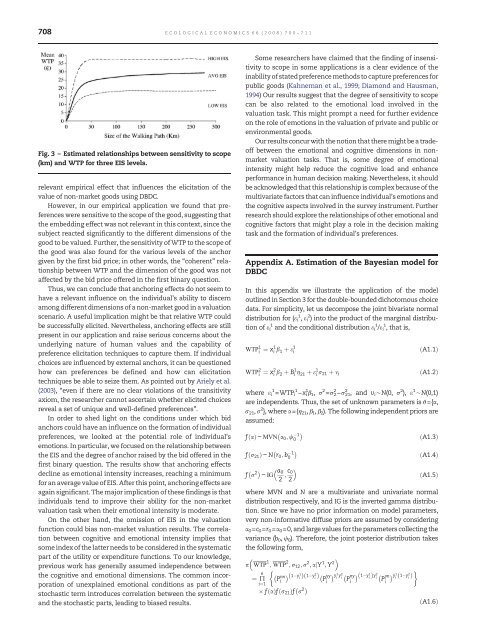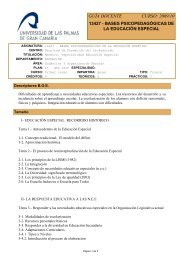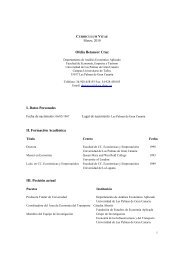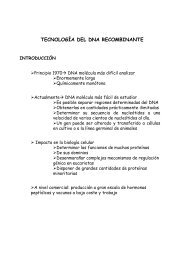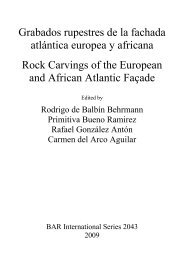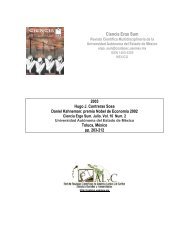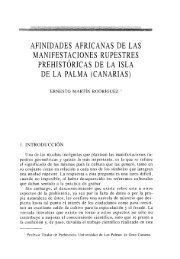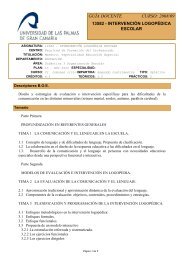Do emotions matter? Coherent preferences under anchoring and ...
Do emotions matter? Coherent preferences under anchoring and ...
Do emotions matter? Coherent preferences under anchoring and ...
Create successful ePaper yourself
Turn your PDF publications into a flip-book with our unique Google optimized e-Paper software.
708 ECOLOGICAL ECONOMICS 66 (2008) 700– 711Fig. 3 – Estimated relationships between sensitivity to scope(km) <strong>and</strong> WTP for three EIS levels.relevant empirical effect that influences the elicitation of thevalue of non-market goods using DBDC.However, in our empirical application we found that <strong>preferences</strong>were sensitive to the scope of the good, suggesting thatthe embedding effect was not relevant in this context, since thesubject reacted significantly to the different dimensions of thegood to be valued. Further, the sensitivity of WTP to the scope ofthe good was also found for the various levels of the anchorgiven by the first bid price; in other words, the “coherent” relationshipbetween WTP <strong>and</strong> the dimension of the good was notaffected by the bid price offered in the first binary question.Thus, we can conclude that <strong>anchoring</strong> effects do not seem tohave a relevant influence on the individual's ability to discernamong different dimensions of a non-market good in a valuationscenario. A useful implication might be that relative WTP couldbe successfully elicited. Nevertheless, <strong>anchoring</strong> effects are stillpresent in our application <strong>and</strong> raise serious concerns about the<strong>under</strong>lying nature of human values <strong>and</strong> the capability ofpreference elicitation techniques to capture them. If individualchoices are influenced by external anchors, it can be questionedhow can <strong>preferences</strong> be defined <strong>and</strong> how can elicitationtechniques be able to seize them. As pointed out by Ariely et al.(2003), “even if there are no clear violations of the transitivityaxiom, the researcher cannot ascertain whether elicited choicesreveal a set of unique <strong>and</strong> well-defined <strong>preferences</strong>”.In order to shed light on the conditions <strong>under</strong> which bidanchors could have an influence on the formation of individual<strong>preferences</strong>, we looked at the potential role of individual's<strong>emotions</strong>. In particular, we focused on the relationship betweenthe EIS <strong>and</strong> the degree of anchor raised by the bid offered in thefirst binary question. The results show that <strong>anchoring</strong> effectsdecline as emotional intensity increases, reaching a minimumfor an average value of EIS. After this point, <strong>anchoring</strong> effects areagain significant. The major implication of these findings is thatindividuals tend to improve their ability for the non-marketvaluation task when their emotional intensity is moderate.On the other h<strong>and</strong>, the omission of EIS in the valuationfunction could bias non-market valuation results. The correlationbetween cognitive <strong>and</strong> emotional intensity implies thatsome index of the latter needs to be considered in the systematicpart of the utility or expenditure functions. To our knowledge,previous work has generally assumed independence betweenthe cognitive <strong>and</strong> emotional dimensions. The common incorporationof unexplained emotional conditions as part of thestochastic term introduces correlation between the systematic<strong>and</strong> the stochastic parts, leading to biased results.Some researchers have claimed that the finding of insensitivityto scope in some applications is a clear evidence of theinability of stated preference methods to capture <strong>preferences</strong> forpublic goods (Kahneman et al., 1999; Diamond <strong>and</strong> Hausman,1994) Our results suggest that the degree of sensitivity to scopecan be also related to the emotional load involved in thevaluation task. This might prompt a need for further evidenceon the role of <strong>emotions</strong> in the valuation of private <strong>and</strong> public orenvironmental goods.Our results concur with the notion that there might be a tradeoffbetween the emotional <strong>and</strong> cognitive dimensions in nonmarketvaluation tasks. That is, some degree of emotionalintensity might help reduce the cognitive load <strong>and</strong> enhanceperformance in human decision making. Nevertheless, it shouldbe acknowledged that this relationship is complex because of themultivariate factors that can influence individual's <strong>emotions</strong> <strong>and</strong>the cognitive aspects involved in the survey instrument. Furtherresearch should explore the relationships of other emotional <strong>and</strong>cognitive factors that might play a role in the decision makingtask <strong>and</strong> the formation of individual's <strong>preferences</strong>.Appendix A. Estimation of the Bayesian model forDBDCIn this appendix we illustrate the application of the modeloutlined in Section 3 for the double-bounded dichotomous choicedata. For simplicity, let us decompose the joint bivariate normaldistribution for (ε i 1 , ε i 2 ) into the product of the marginal distributionof ε i 1 <strong>and</strong> the conditional distribution ε i 1 /ε i 1 ,thatis,WTP 1 i¼ x 1 i b 1 þ e 1 iðA1:1ÞWTP 2 i¼ x 2 i b 2 þ B 1 i g 21 þ e 1 i r 21 þ m i ðA1:2Þwhere ε 1 i =WTP 1 i −x 1 i β 1 , σ 2 =σ 2 2 −σ 2 21 , <strong>and</strong> v i ∼N(0, σ 2 ), ε 1 ∼N(0,1)are independents. Thus, the set of unknown parameters is θ={α,σ 21 , σ 2 }, where α=(η 21 , β 1 , β 2 ). The following independent priors areassumed:fðaÞfMVN a 0 ; w 1 0ðA1:3Þfðr 21 ÞfN r 0 ; b 1 ðA1:4Þ0f r 2 fIG a 02 ; c 0ðA1:5Þ2where MVN <strong>and</strong> N are a multivariate <strong>and</strong> univariate normaldistribution respectively, <strong>and</strong> IG is the inverted gamma distribution.Since we have no prior information on model parameters,very non-informative diffuse priors are assumed by consideringα 0 =c 0 =r 0 =α 0 =0, <strong>and</strong> large values for the parameters collecting thevariance (b 0 , ψ 0 ). Therefore, the joint posterior distribution takesthe following form,p P WTP 1 ; P WTP 2 ; r 12 ; r 2 ; ajY 1 ; Y 2¼ j ni¼1P nni 1 y 1ið Þð1 y 2 iÞ yy y 1Pi y2 iiP nyi 1 y 1ið Þy 2 iP yni y 1 1 y 2 iðiÞ fðaÞfðr 21 Þf r 2 ðA1:6Þ


